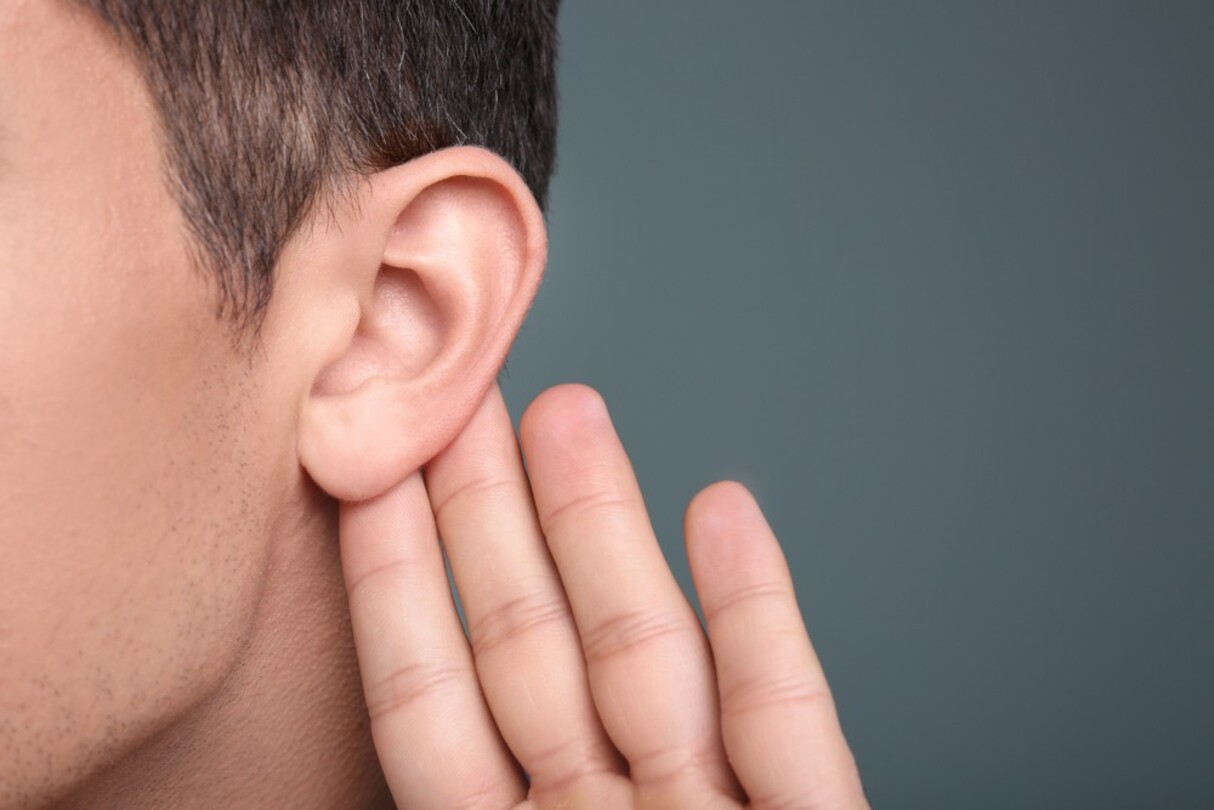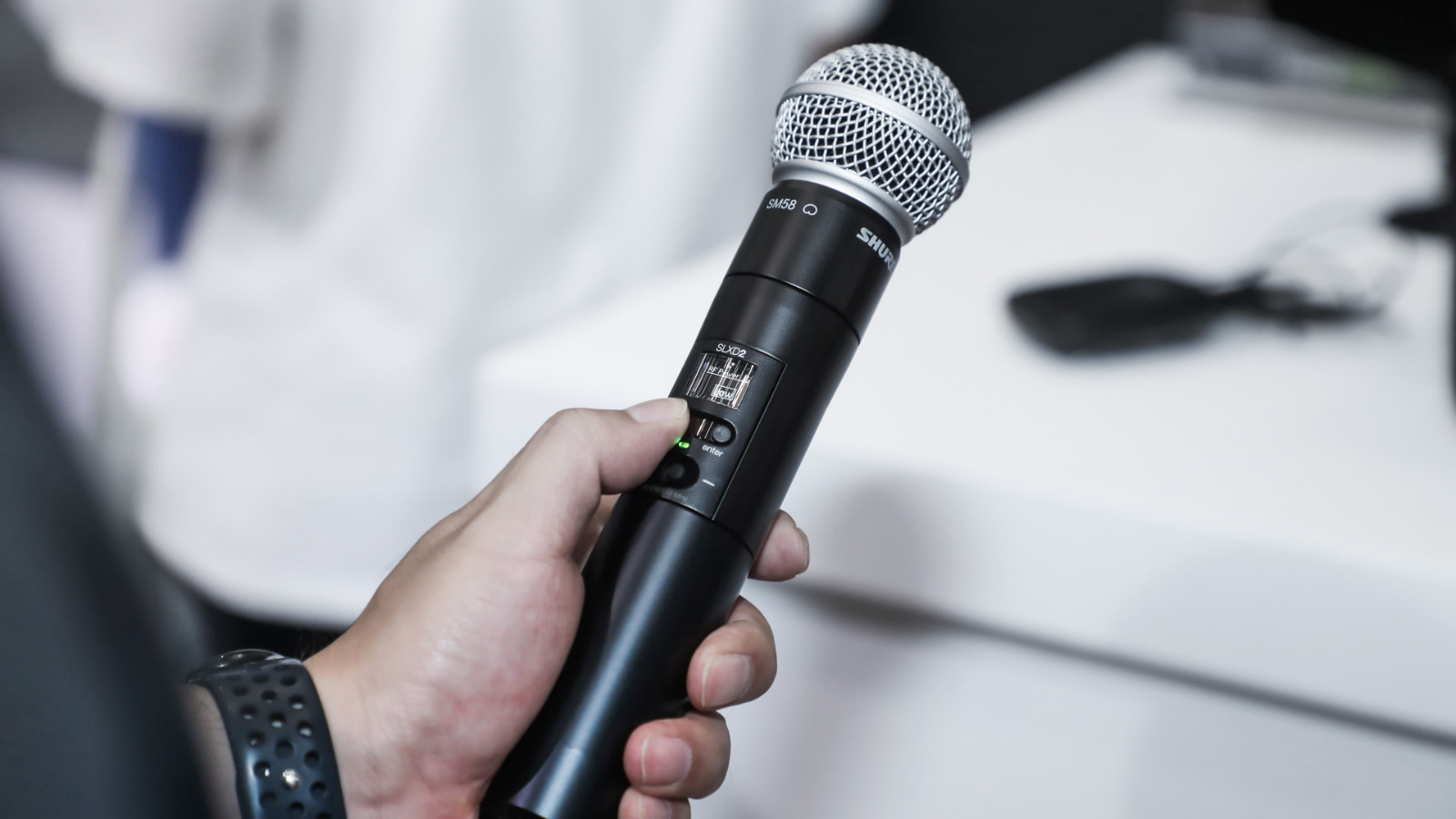Home>Events & Info>Frequency>How High Of Frequency Can Humans Hear


Frequency
How High Of Frequency Can Humans Hear
Published: February 18, 2024
Discover the human hearing range and learn how frequency affects our ability to hear. Find out the highest frequency audible to the human ear. Explore more about frequency and hearing.
(Many of the links in this article redirect to a specific reviewed product. Your purchase of these products through affiliate links helps to generate commission for AudioLover.com, at no extra cost. Learn more)
Table of Contents
Introduction
Human hearing is an incredible and complex sense that enables us to perceive the world through sound. From the gentle rustling of leaves to the melodic notes of a song, our ability to hear enriches our experiences and connects us to our surroundings. Understanding the capabilities of human hearing, particularly in terms of frequency, is a fascinating exploration of our auditory perception.
In this article, we will delve into the intricacies of human hearing, focusing on the frequency range that the human ear can detect. By examining the fundamental principles of sound and the factors that influence our auditory abilities, we will gain a deeper appreciation for the remarkable mechanisms that enable us to perceive the diverse spectrum of sounds in our environment. Furthermore, we will address the intriguing question: How high of a frequency can humans hear?
Join us on this enlightening journey as we unravel the mysteries of human hearing and gain insight into the upper limits of our auditory perception.
The Basics of Human Hearing
Human hearing is a remarkable sensory process that allows us to detect and interpret sound waves. At the core of this intricate mechanism are the auditory organs, including the outer ear, middle ear, inner ear, and auditory nerve. The process begins with the outer ear, which captures sound waves and funnels them through the ear canal to the eardrum. As the eardrum vibrates in response to the incoming sound waves, it sets the tiny bones of the middle ear into motion, transmitting the vibrations to the cochlea in the inner ear.
Within the cochlea, the vibrations are converted into neural signals by hair cells, which stimulate the auditory nerve to carry the signals to the brain for processing. This intricate process enables us to perceive a wide range of sounds, from the faintest whispers to the booming resonance of thunder. Our ability to discern various pitches, tones, and volumes is a testament to the remarkable precision of the human auditory system.
Furthermore, the human ear is adept at localizing the source of sounds, allowing us to pinpoint the direction from which a sound originates. This ability is facilitated by the brain’s interpretation of subtle differences in the timing and intensity of sound waves reaching each ear, providing us with spatial awareness and enhancing our capacity to navigate our acoustic environment.
The Frequency Range of Human Hearing
The frequency range of human hearing refers to the spectrum of sound frequencies that the human ear can detect. Sound waves consist of alternating compressions and rarefactions of air molecules, and the frequency of a sound wave is directly related to the pitch that we perceive. The range of human hearing is typically considered to span from 20 hertz (Hz) to 20,000 Hz, encompassing a broad spectrum of audible frequencies.
At the lower end of the spectrum, infrasound refers to sound waves with frequencies below the threshold of human hearing, typically below 20 Hz. While these low-frequency sounds may not be consciously perceived, they can still have physiological effects on the body. In contrast, the upper limit of human hearing is defined by the threshold of audibility for the average human ear, which is approximately 20,000 Hz. However, this upper limit can vary among individuals, with younger individuals generally having a higher upper threshold compared to older individuals.
It is important to note that the ability to perceive the full range of human hearing may diminish with age or due to exposure to loud noises, which can cause damage to the delicate structures of the inner ear. Despite these limitations, the human ear’s capacity to detect a wide range of frequencies enables us to appreciate the rich tapestry of sounds that form the backdrop of our daily lives.
Factors Affecting Human Hearing
Several factors can influence the sensitivity and range of human hearing, shaping our ability to perceive and interpret sound. Age is a significant factor that can affect hearing capabilities, as the sensitivity to high-frequency sounds tends to diminish with age due to natural changes in the auditory system. Exposure to loud noises over time can also contribute to hearing loss, underscoring the importance of protecting our ears from prolonged or excessive noise levels.
Additionally, genetic predispositions and individual variations can play a role in determining an individual’s hearing acuity. Certain genetic factors may influence susceptibility to hearing impairment, highlighting the diverse and nuanced nature of human auditory abilities. Furthermore, underlying medical conditions, such as ototoxicity or otosclerosis, can impact hearing function and may require medical intervention to mitigate their effects.
Environmental factors, including the ambient noise levels in our surroundings, can also influence our perception of sound. Constant exposure to high levels of environmental noise, such as traffic or industrial machinery, can contribute to hearing fatigue and potentially lead to long-term hearing damage. Conversely, the presence of background noise can affect our ability to discern and concentrate on specific sounds, underscoring the importance of acoustic environments in facilitating effective communication and auditory perception.
Advancements in technology and the widespread use of personal audio devices have introduced new considerations for hearing health. Prolonged exposure to high-volume music and recreational noise can pose risks to hearing, particularly among younger individuals who may engage in activities that expose them to excessive sound levels. Educating individuals about safe listening practices and promoting awareness of the potential impact of recreational noise on hearing health are essential in safeguarding the auditory well-being of the population.
By understanding the multifaceted factors that can influence human hearing, we can cultivate a greater appreciation for the intricacies of our auditory sense and take proactive measures to preserve and protect our hearing abilities.
How High Can Humans Hear?
The upper limit of human hearing, often referred to as the threshold of audibility, is approximately 20,000 hertz (Hz) for the average adult. This upper threshold can vary among individuals, with younger individuals typically exhibiting a higher upper limit compared to older individuals. The ability to perceive higher frequencies is attributed to the responsiveness of the hair cells within the cochlea, which are responsible for transducing sound vibrations into neural signals.
Notably, the upper limit of human hearing tends to decline with age, a phenomenon known as presbycusis. As individuals grow older, the sensitivity to high-frequency sounds diminishes, and the upper threshold of audibility may gradually decrease. This age-related decline in high-frequency hearing is a natural part of the aging process and is influenced by factors such as genetics, environmental exposures, and overall auditory health.
It is important to highlight that while the average upper limit of human hearing is commonly cited as 20,000 Hz, some individuals, particularly those with exceptional auditory acuity, may possess a slightly higher upper threshold. Conversely, individuals with certain hearing impairments or medical conditions affecting the auditory system may experience a reduced upper limit of audibility.
Furthermore, the perception of high-frequency sounds can be influenced by environmental factors and individual listening habits. Exposure to prolonged or intense noise levels, such as those encountered in industrial settings or through recreational activities, can impact the delicate structures of the inner ear and contribute to diminished high-frequency hearing acuity over time. Additionally, the use of personal audio devices at high volume levels can pose risks to hearing health, underscoring the importance of practicing safe listening habits.
Understanding the upper limits of human hearing not only sheds light on the remarkable capabilities of the auditory system but also emphasizes the need to protect and preserve our hearing abilities. By being mindful of environmental noise levels, adopting safe listening practices, and seeking regular auditory assessments, individuals can take proactive steps to safeguard their auditory well-being and maintain their sensitivity to a broad range of sound frequencies.
Conclusion
Exploring the intricacies of human hearing and the upper limits of our auditory perception provides a profound insight into the remarkable capabilities of the human auditory system. From the detection of low-frequency vibrations to the perception of high-pitched tones, our ability to discern a broad spectrum of sound frequencies enriches our experiences and connects us to the auditory tapestry of the world around us.
Throughout this exploration, we have delved into the fundamental principles of human hearing, examining the mechanisms that enable us to perceive sound and the factors that can influence our auditory abilities. The intricate interplay of the outer ear, middle ear, inner ear, and auditory nerve underscores the complexity of the auditory process, highlighting the precision with which our auditory system detects and processes sound waves.
Furthermore, we have examined the frequency range of human hearing, spanning from the lower threshold of infrasound to the upper limit of audibility, which is typically around 20,000 Hz for the average adult. This expansive range enables us to appreciate the diverse array of sounds that form the backdrop of our daily lives, from the gentle rustling of leaves to the melodious notes of music.
As we pondered the factors affecting human hearing, including age-related changes, genetic predispositions, environmental influences, and technological advancements, we gained a deeper understanding of the nuanced nature of auditory perception. By acknowledging the impact of these factors, we can take proactive measures to protect and preserve our hearing abilities, fostering a culture of auditory health and well-being.
In our exploration of how high humans can hear, we recognized the variability of individual thresholds and the influence of environmental and lifestyle factors on auditory acuity. This understanding underscores the importance of promoting safe listening practices and advocating for the preservation of hearing health across all age groups.
Ultimately, the study of human hearing and the upper limits of auditory perception serves as a testament to the intricate design of the human auditory system and the significance of nurturing and safeguarding our precious sense of hearing. By embracing a holistic approach to auditory health and fostering awareness of the factors that shape our hearing abilities, we can embark on a journey toward preserving the richness and diversity of the sounds that enrich our lives.











